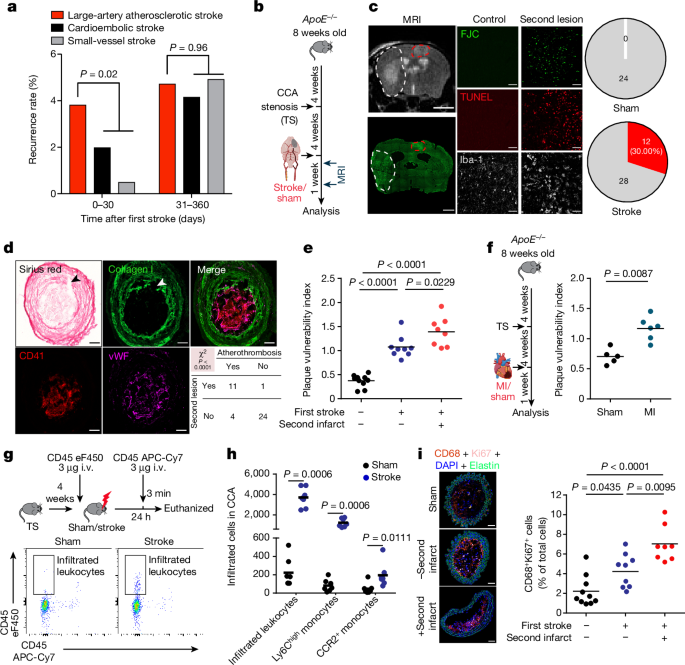2024-08-07 ミュンヘン大学(LMU)
<関連情報>
- https://www.lmu.de/en/newsroom/news-overview/news/treating-strokes-new-therapy-on-the-horizon.html
- https://www.nature.com/articles/s41586-024-07803-4
動脈硬化性脳梗塞の再発を引き起こすのはDNAを感知するインフラマソームである DNA-sensing inflammasomes cause recurrent atherosclerotic stroke
Jiayu Cao,Stefan Roth,Sijia Zhang,Anna Kopczak,Samira Mami,Yaw Asare,Marios K. Georgakis,Denise Messerer,Amit Horn,Ruth Shemer,Charlene Jacqmarcq,Audrey Picot,Jack P. Green,Christina Schlegl,Xinghai Li,Lukas Tomas,Alexander Dutsch,Thomas G. Liman,Matthias Endres,Saskia R. Wernsdorf,Christina Fürle,Olga Carofiglio,Jie Zhu,David Brough,DEMDAS Study Group,… Arthur Liesz
Nature Published:07 August 2024
DOI:https://doi.org/10.1038/s41586-024-07803-4

Abstract
The risk of early recurrent events after stroke remains high despite currently established secondary prevention strategies1. Risk is particularly high in patients with atherosclerosis, with more than 10% of patients experiencing early recurrent events1,2. However, despite the enormous medical burden of this clinical phenomenon, the underlying mechanisms leading to increased vascular risk and recurrent stroke are largely unknown. Here, using a novel mouse model of stroke-induced recurrent ischaemia, we show that stroke leads to activation of the AIM2 inflammasome in vulnerable atherosclerotic plaques via an increase of circulating cell-free DNA. Enhanced plaque inflammation post-stroke results in plaque destabilization and atherothrombosis, finally leading to arterioarterial embolism and recurrent stroke within days after the index stroke. We confirm key steps of plaque destabilization also after experimental myocardial infarction and in carotid artery plaque samples from patients with acute stroke. Rapid neutrophil NETosis was identified as the main source of cell-free DNA after stroke and NET–DNA as the causative agent leading to AIM2 inflammasome activation. Neutralization of cell-free DNA by DNase treatment or inhibition of inflammasome activation reduced the rate of stroke recurrence after experimental stroke. Our findings present an explanation for the high recurrence rate after incident ischaemic events in patients with atherosclerosis. The detailed mechanisms uncovered here provide clinically uncharted therapeutic targets for which we show high efficacy to prevent recurrent events. Targeting DNA-mediated inflammasome activation after remote tissue injury represents a promising avenue for further clinical development in the prevention of early recurrent events.


